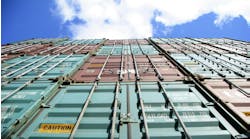Putting Trade with Canada and Mexico on the Map for US Manufacturers
While the notion of global trade may conjure thoughts of air and sea freight crossing oceans and hemispheres, the simple fact is that for U.S. manufacturers, two of the surest international export/import partners can be found only a drive away from some of our very own border cities. Today, U.S.-Canada and U.S.-Mexico trade relationships rank among the strongest in the world. Just consider the numbers: Combined exports to both countries were nearly $600 billion annually at last official count in 2012. Canada ranks as our largest goods trading partner with imports and exports totaling $632 billion per year, and Mexico is not far behind at $507 billion.
Of course, manufacturers of all sizes understand the relative draw of developing a trade plan that includes our neighbors to the north and south, which explains why the Canada and Mexico trade numbers are so promising. They also understand in a very general way that global trade makes sense in today’s technology-driven, e-commerce-centered environment—and in an era where more than 70% of the world’s purchasing power resides outside of the U.S. Even so, many small and medium-sized businesses have yet to go global, in part because the task of conducting business in a new country—even one just next door—under new rules, and with new logistics demands, seems daunting.
To get a plan off the ground, and to take advantage of the robust North American marketplace, it is critical for companies to understand why this marketplace works so well, and how they can make it work even better to meet their specific goals.
Benefits of Trade with Canada and Mexico
First and foremost, there are clear financial reasons to consider Canada and Mexico as part of a comprehensive trade strategy. Today, U.S. manufacturers are looking to our neighbors to fulfill multiple goals: exporting goods, importing source materials and locating manufacturing facilities. Since taking effect in 1994, the North American Free Trade Agreement (NAFTA) has been a leading driver in trade growth, significantly reducing costs by removing or reducing tariffs in multiple industries, including agriculture, textiles and automobile. According to the Office of the U.S. Trade Representative, U.S. manufacturing exports to NAFTA countries have increased by 258%, and exports of computer and electronic products, furniture, paper and fabricated metals have all more than tripled since the free trade agreement was signed.
Beyond NAFTA, there are other critical financial considerations, largely, the generally lower logistics costs involved and ease of customs clearance. Given the close proximity of Canada and Mexico, and the productive relationships that exist between our governments, border movements are simplified relative to other nations. Compared with shipping to and from Asia, transporting goods and materials to and from our closest neighbors is comparatively inexpensive. Together, lower transportation costs and streamlined customs procedures mean reduced overall logistics budgets within the North American marketplace.
Finally, for those U.S. manufacturers considering a relocation of overseas production facilities closer to home—which can in some cases reduce transportation and operational costs—both Canada and Mexico boast a highly skilled labor force, along with quality education in the area of engineering. There is also the lower cost of manufacturing in a shared maquiladora facility. A separate company owns and runs the facility, so employment risks are covered by the owner of the facility.
Getting the Most from the North American Marketplace
As experienced traders and logistics experts understand, maximizing trade relationships in any market requires an understanding of the smallest details of local and regional production and workforce regulations, customs procedures and rules, and licensing and permitting requirements. This is true in Canada and Mexico, just as it is abroad.
While they may not be far away, our neighbors have rules and enforcement habits that can be different from those in the U.S. For instance, in Mexico, the transportation of goods through customs can be significantly delayed by even the smallest of paperwork errors. Companies must state the date on shipment documents like NAFTA certificates in the following manner: day, month, year. If the date is stated as it is ordinarily in the U.S., shipment delays can be expected.
Beyond the actual border clearance process, manufacturers will find evolving regulations governing the movement of goods in both Canada and Mexico. As in many countries, rules pertaining to specific goods and materials can change quickly, and companies should work closely with their logistics partner to stay up-to-date. As an example, Mexican customs recently began enforcing regulations on shoes and apparel that require the importer in Mexico to be registered in an effort to prevent the undervaluation of shipments.
In addition to examining customs requirements, manufacturers considering exporting goods to Canada and Mexico must understand how those goods are ultimately regulated by each country. For instance, in the area of vitamins and supplements, in some cases items sold over the counter in the U.S. will be sold only with a prescription in Canada and Mexico. This regulatory difference means that some items exported to these countries will require a specific license or permit. On the import side, U.S. companies that work with particular manufacturers across the border also need to understand when a license is required.
Today, the U.S., Canada and Mexico continue to pursue agreements that are designed to streamline the trade process and harmonize data flow and security procedures, and potential traders would be well advised to follow the progress of these initiatives. The Beyond the Border program is a good example. An effort undertaken by the U.S. and Canada, Beyond the Border is a joint long-term partnership that includes different initiatives which will support a perimeter approach to security. It is designed to address security threats while allowing for the streamlined movement of goods and people across the shared border.
Mutual recognition and acceptance of trusted trader programs, which will allow for expedited customs procedures, are part of Beyond the Border, and other trusted trader programs are also in the works. In addition, the U.S. is pursuing the implementation of the International Trade Data System (ITDS), a system which will allow international traders to submit documents required by U.S. Customs and Border Protection and its Partner Government Agencies through a “single window.” The ITDS will expedite customs procedures and reduce paperwork, fulfilling U.S. commitments under the Beyond the Border program. Mexico has also recently implemented a single window program.
Today, the North American marketplace is expanding. Manufacturers that hope to chart their own expansion should start now to understand how Canada and Mexico can play a central role in their strategies.
Phillip Poland, director of international trade compliance for DHL in the Americas, oversees import and export compliance in the Americas region as well as assists with the development export compliance programs globally for the company. He has served as adjunct faculty at Saint Louis University, teaching graduate level courses in international contracts law and courses in how to do business and sell products internationally. He has also served as guest lecturer at various universities on the subject of international business and trade.




